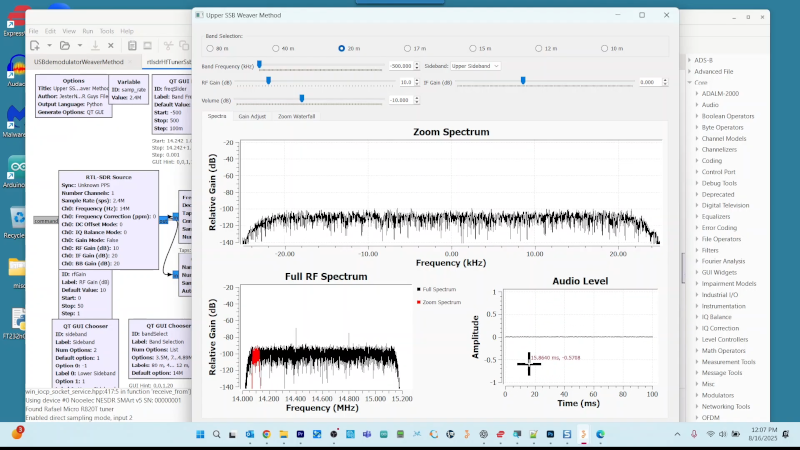[Paul Maine] was experimenting with GNU Radio and an RTL-SDR dongle. He created an SSB receiver and, lucky for us, he documented it all in a video you can see below. He walks through how to generate SSB, too. If videos aren’t your thing, you can go back to the blog post from [Gary Schafer] that inspired him to make the video, which is also a wealth of information.
There is a little math — you almost can’t avoid it when talking about this topic. But [Paul] does a good job of explaining it all as painlessly as possible. The intuitive part is simple: An AM signal has most of its power in the carrier and half of what’s left in a redundant sideband. So if you can strip all those parts out and amplify just one sideband, you get better performance.
We love to play with GNU Radio. Sure, the GNU Radio Companion is just a fancy shell over some Python code, but we like how it maps software to blocks like you might use to design a traditional receiver.
If you want to try any of this out and don’t have a sufficient HF antenna or even an HF-capable SDR, no worries. [Paul] thoughtfully recorded some IQ samples off the air into a file. You can play back through your design to test how it works.
If you have never used GNU Radio, starting with audio isn’t a bad way to get your feet wet. That’s how we started our tutorial a decade ago. Still worth working through it if you are trying to get started.

